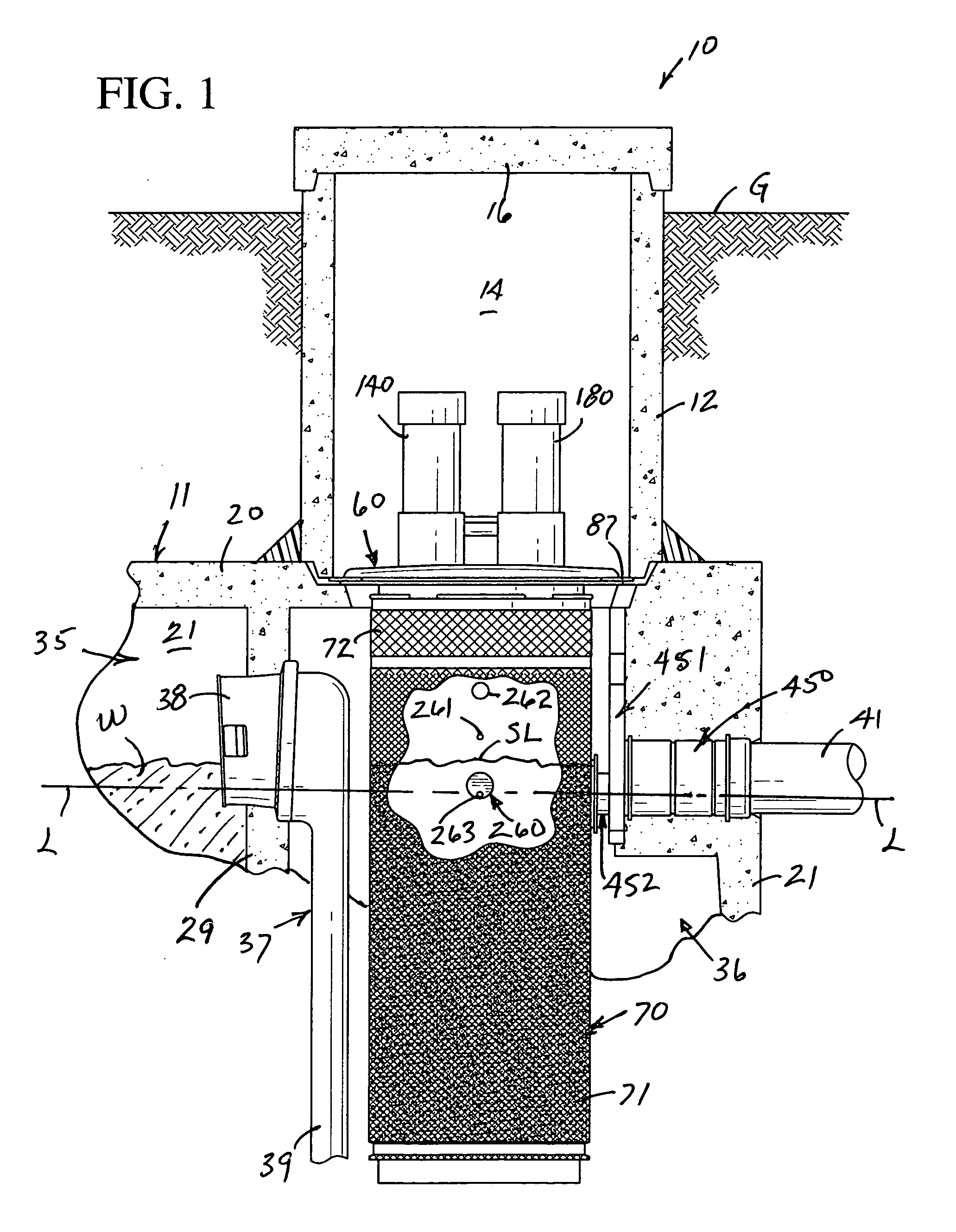Wastewater flow equalization system and method
a wastewater flow and equalization system technology, applied in the direction of sedimentation settling tanks, multi-stage water/sewage treatment, separation processes, etc., can solve the problems of process failure, high undesired, and most definitely the extreme push of the original wastewater treatment installation
- Summary
- Abstract
- Description
- Claims
- Application Information
AI Technical Summary
Benefits of technology
Problems solved by technology
Method used
Image
Examples
Embodiment Construction
[0021]The novel apparatus, mechanism and method disclosed specifically hereinafter includes improvements in the wastewater treatment plant of U.S. Pat. No. 5,413,706 dated May 9, 1995 in the name of Jan D. Graves and assigned to Norwalk Wastewater Equipment Company (NORWECO), and the totality of the disclosure of the latter patent is incorporated herein by reference. Much of comparable elements of the latter patent which correspond to elements herein will be described briefly utilizing identical reference numerals to thereby assure compliance with 35 U.S.C. §112, the first paragraph thereof.
[0022]In keeping with the present invention, a novel wastewater treatment plant (FIG. 1) is generally designated by the reference numeral 10 and is normally designed for residential use, such as individual homes, although the same is readily adapted to many other facilities and utilizes well known digestion processes of wastewater or like fluid treatment.
[0023]The wastewater treatment plant 10 in...
PUM
| Property | Measurement | Unit |
|---|---|---|
| Flow rate | aaaaa | aaaaa |
| Length | aaaaa | aaaaa |
| Size | aaaaa | aaaaa |
Abstract
Description
Claims
Application Information
 Login to View More
Login to View More - R&D Engineer
- R&D Manager
- IP Professional
- Industry Leading Data Capabilities
- Powerful AI technology
- Patent DNA Extraction
Browse by: Latest US Patents, China's latest patents, Technical Efficacy Thesaurus, Application Domain, Technology Topic, Popular Technical Reports.
© 2024 PatSnap. All rights reserved.Legal|Privacy policy|Modern Slavery Act Transparency Statement|Sitemap|About US| Contact US: help@patsnap.com










